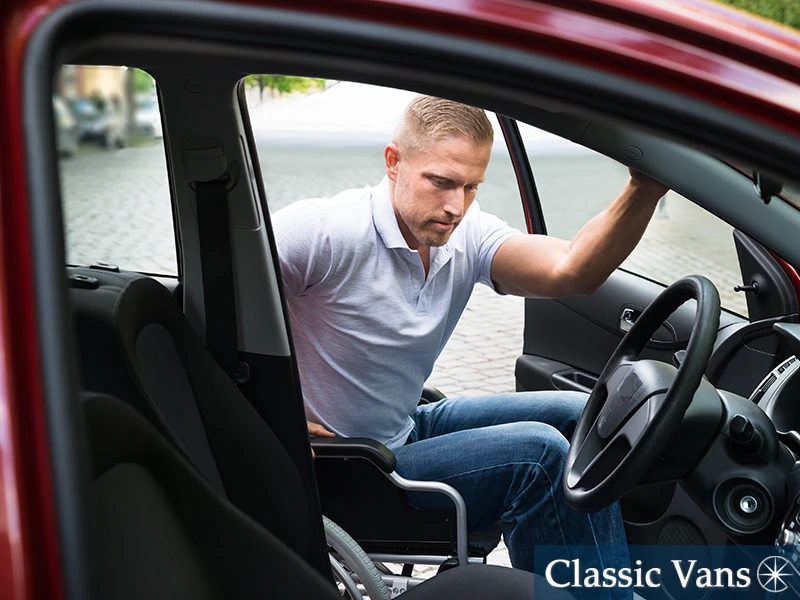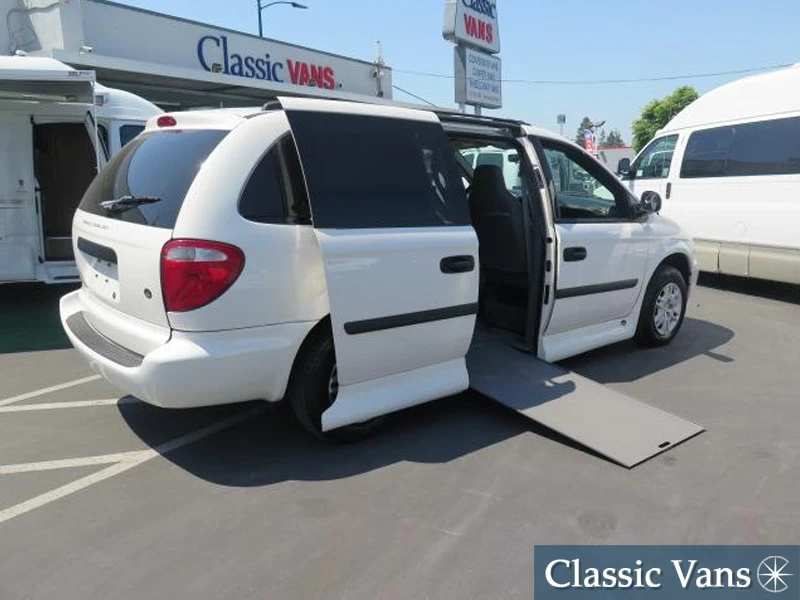Whether you’re ready to get behind the wheel of a new or used mobility van or SUV, it’s important to consider different features like side entry vs. rear entry and in-floor vs. fold-out ramps. But it’s equally essential to find the type of driving control that works best with your specific needs.
New driving controls have given back independence to many people learning to live with a disability, and there are several different types of driving aids to consider.
There are hand controls, steering devices, left-foot accelerators, and many other less common types. Talking with your doctor, physical therapist, certified driver rehabilitation specialist and a mobility van service professional is a good place to start researching.
Below are some of the most common types of driving aids.
Hand controls
Hand controls are devices that manually operate the accelerator and/or brake on a vehicle. They use the driver’s hand rather than their foot. There are four types of hand controls:
Push/hand control
This device operates the brake on the vehicle by hand. The push/pull aid operates by pushing forward (toward the brake pedal to brake) and pulling toward the rear to accelerate.
Push/twist hand control
The push/twist aid operates by pushing the control handle forward (toward the brake pedal) and twisting the handle (much like a motorcycle) to accelerate.
Push/rock hand control
The Push/Rock hand aid operates by pushing the control hand forward (toward the brake pedal) to brake and rocking the upright handle rearward toward the user to accelerate.
Push/right angle hand control
This device operates the brake by pushing forward toward the brake pedal. In order to accelerate, the driver must move the control down toward their lap.
Compare the pros and cons of handicap minivans, full-size mobility vans, and handicap SUVs.
Steering devices
Steering devices are apparatuses attached to the vehicle’s steering wheel that allow safe turning of the vehicle with only one hand. There are several types of steering device configurations:
- Tri-pin. A steering device with upright pins to stabilize the hand and wrist of the driver.
- U or V pin. A steering device with two vertical pins to stabilize the hand of the driver.
- Knob. A steering device with a knob type grip.
- Palm. A steering device that wraps over the top of the hand.
- Cuff. A steering device with a curved oval shape that fits around the hand of the driver.
- Amputee. A steering device that integrates with a driver’s prosthesis.
- Custom. A steering device designed for a specific application or driver.
Left-foot accelerators
Left-foot accelerators take the accelerating functions and convert them for left-foot use for those with limited or no use of the right foot.
Mobility Products & Design (MPD) has created a left-foot accelerator that is recommended by driving evaluators for drivers to accelerate using their left foot. It is equipped with a guard that prevents the driver from resting their right foot on the accelerator pedal. This left-foot accelerator has a quick release mechanism that is easily removable for ambulatory drivers without tools.
Manufacturing & Production Services (MPS) has also created a quick-release, left-foot accelerator. This is installed on the left side and is mechanically linked to the original manufacturer’s pedal. The pedal guard shields the original pedal, making it inoperable. This lightweight pedal is adjustable and easy to remove.
Learn how to purchase a handicap accessible van with assistance, grants and subsidies.
Other types of driving aids
Included in the list below are a number of additional driving aids that are extremely helpful for drivers with disabilities:
- Adapted key holder. Also referred to as a Quad Key, an adapted key holder improves both grip and turning capabilities.
- Crossover gear shift extension. This is a device that attaches to the OEM column mounted gear selector and crosses over to the left of the steering column.
- Dash mounted gear shift. A gear selector that can be mounted on the dash of newer vehicles.
- Extension control right hand turn signal lever extension-drop style. This lightweight crossover lever helps easily operate your turn signals. This turn signal lever can be operated while having your hand on your hand control.
- Extension control key extension. This key extension was designed to provide better leverage when starting your vehicle. This product can be used anywhere that you would use a key—your vehicle, your office or your front door.
- Gear shift extension. This is a device that attaches to the OEM gear selector and offers additional leverage for shifter operation.
- Hand style emergency brake. This was designed to aid in using your emergency brake.
- Manual parking brake extension. A handle that enables the driver to set the parking brake with their hand.
- Pedal extensions. Devices mounted to the brake and/or accelerator for use by a driver of short stature.
- Steering device extension. Used to bring the steering device to the driver.
- T-handle mounted gear shift. A gear selector that can be mounted to a T-handle style.
- Transfer bar. A bar, handle or strap to assist an individual in movement and/or balance.
- Turn signal extension. A device that attaches to the OEM turn signal lever to allow a different location for activation.
Consulting a certified driving rehabilitation specialist is always a good idea before installing any new driving aids.


